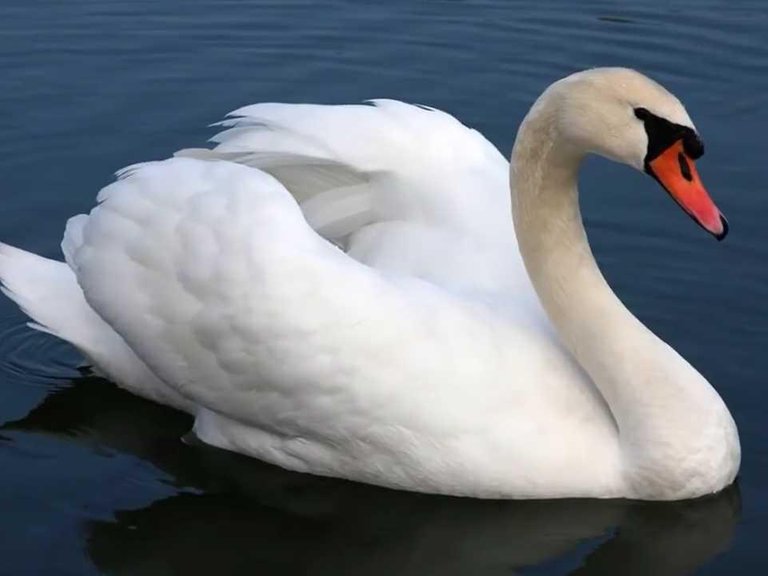
*Geese are large aquatic birds of the genus Cygnus family Anatidae. Ducks and Short-necked geese are also found in the Anatidae family. The goose with a short-necked goose enters the Anserinae subfamily but the Goose has its own tribe, the Cygnini tribe. There are seven species in the genus Cygnus. Geese are monogamous animals, 'divorce' sometimes occurs when nesting processes fail.*  )
*Geese is the largest member of the Anatidae family, and is one of the largest water birds that can fly. The largest species of goose, the White Goose, Goose Goose, and Goose Wooper can reach 60 inches long and weigh 50 pounds. Their wingspan can reach a length of three meters. Compared to his brother, the short-necked goose, the geese are larger in size and proportionately have larger legs and necks. In an adult swan, they have marks of skin that are not covered in feathers between the eyes and the beak. Male and female swans are similar, do not show the nature of sexual simorfism. But the size of male geese is generally larger and heavier.*

*Geese is the largest member of the Anatidae family, and is one of the largest water birds that can fly. The largest species of goose, the White Goose, Goose Goose, and Goose Wooper can reach 60 inches long and weigh 50 pounds. Their wingspan can reach a length of three meters. Compared to his brother, the short-necked goose, the geese are larger in size and proportionately have larger legs and necks. In an adult swan, they have marks of skin that are not covered in feathers between the eyes and the beak. Male and female swans are similar, do not show the nature of sexual simorfism. But the size of male geese is generally larger and heavier.*
 )
*Species in the northern hemisphere have a clean white coat color, but geese in the southern hemisphere mix black and white. The Australian Black Swan (Cygnus atratus) is completely black except for the fur that is used to fly on its wings. Young black goose is bright gray. In South America, a black-necked goose has a black neck to its name. Goose legs are generally dark gray, except for two species from South America that have pink legs. Beak color varies; aubartic species have a black beak with a yellow mixture. The others are red and black.*

*Species in the northern hemisphere have a clean white coat color, but geese in the southern hemisphere mix black and white. The Australian Black Swan (Cygnus atratus) is completely black except for the fur that is used to fly on its wings. Young black goose is bright gray. In South America, a black-necked goose has a black neck to its name. Goose legs are generally dark gray, except for two species from South America that have pink legs. Beak color varies; aubartic species have a black beak with a yellow mixture. The others are red and black.*
 )
*Geese generally occur in temperate climates, rarely present in the tropics. Five species exist in the northern hemisphere, one species found in Australia and Aelandia Baru, the remainder scattered in South America. The goose is not present in tropical Asia, Central America, northern part of South America, and all of Africa.
The goose feeds on land and in the water. They are almost always herbivorous, though a small number of small aquatic animals fall prey to them. In the waters, the food they get by filtering water, and their food consists of roots, stems, and leaves of aquatic plants and plants in the water.*
)
*Geese generally occur in temperate climates, rarely present in the tropics. Five species exist in the northern hemisphere, one species found in Australia and Aelandia Baru, the remainder scattered in South America. The goose is not present in tropical Asia, Central America, northern part of South America, and all of Africa.
The goose feeds on land and in the water. They are almost always herbivorous, though a small number of small aquatic animals fall prey to them. In the waters, the food they get by filtering water, and their food consists of roots, stems, and leaves of aquatic plants and plants in the water.*
Hi! I am a robot. I just upvoted you! I found similar content that readers might be interested in:
https://steemit.com/animals/@berline/goose-2017115t182026975z
World of Photography
>Visit the website<
You have earned 6.50 XP for sharing your photo!
Daily photos: 1/2
Daily comments: 0/5
Multiplier: 1.30
Block time: 2018-05-13T15:17:21
Total XP: 120.10/200.00
Total Photos: 21
Total comments: 0
Total contest wins: 0
Follow:
Join the Discord channel: click!
Play and win SBD:
Daily Steem Statistics:
Learn how to program Steem-Python applications:
Developed and sponsored by: @photocontests@fairlotto@dailysteemreport@steempytutorials @juliank